Does mouth taping for sleep actually work? We asked healthcare experts
Content is created by CNN Underscored’s team of editors who work independently from the CNN newsroom. When you buy through links on our site, CNN and its syndication partners may earn a commission. Learn more
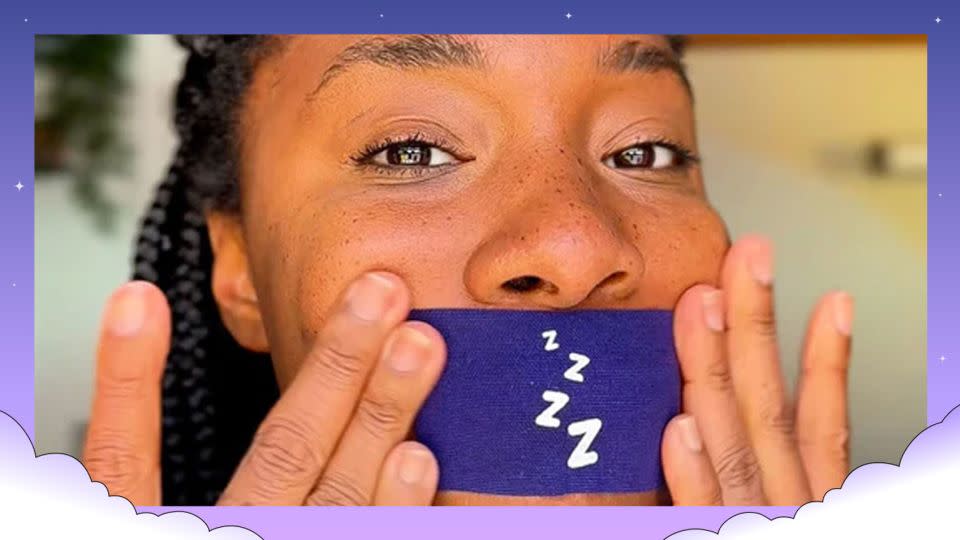
This article is a part of CNN Underscored’s Guide to Sleep, a weeklong focus on everything you need to sleep better. We’ll be featuring new products, tips and exclusive deals all week, so check in every morning to see what’s new.
Mouth breathers get a bad rap, especially when it comes to sleep. Luckily, there’s a trend that could save them (and their loved ones) from enduring another night of snoring and bad breath: mouth taping for sleep. The practice has gone viral on social media, prompting more attention in the medical, dental and even beauty fields. Ahead, we dive into what exactly taping your trap shut involves, its benefits and risks and what health experts have to say about the whole thing.
What is mouth taping?
Mouth taping, unsurprisingly, involves taping one’s lips together overnight in order to promote nasal breathing and improve sleep. If you’re picturing a strip of duct tape over the mouth, hostage-style, you’re not that far off. While it’s not advised to actually use duct tape due to potential skin irritation and pain with removal, there are a number of products that seal the lips in a similar fashion. Mouth tape that’s actually made for the job takes comfort and safety into account. The goal, after all, is a more restful night’s sleep. From skin-safe silicone tape to bandage-style strips, mouth tape comes in a variety of formats.
But why is breathing through your nose so important? According to Dr. Michael J. Wei, a cosmetic dentist with a practice at Manhattan New York City Cosmetic Dentist, “Breathing through the nose helps filter, humidify and warm the air before it enters the lungs, which can help improve overall respiratory health. Nasal breathing also promotes better oxygen uptake and can reduce the risk of snoring and sleep disturbances.”
On the flip side, Dr. Erin Fraundorf, an orthodontist and the founder of Boca Orthodontic and Whitening Studio in St. Louis, Missouri, notes that, “Sleeping with your mouth open and breathing through your mouth may cause you to wake up still feeling tired and with a dry mouth, which has been found to contribute to bad breath, cavities, a hoarse voice and dry lips.”
Benefits of mouth taping
There are a number of potential benefits to mouth taping, but most being talked about on TikTok are anecdotal. “Despite social media claims, there is very little research supporting the benefits of mouth taping,” explains Dr. Hemalee Patel, a primary care provider and senior director of chronic disease management at One Medical. “While the effectiveness of nasal breathing has been well-documented in regard to preventing dental issues — specifically tooth decay, gum disease, misalignment of the jaw and bad breath — studies on mouth taping specifically have been limited and inconclusive.”
Fraundorf agrees that since mouth taping is a fairly new practice, the research on it is in the early stages. However, she also notes a long list of health benefits that could be attributed to mouth taping, including reduced snoring and improved sleep. She and Wei share a number of specific changes that mouth taping may contribute to:
Improved nasal breathing. They key benefit to mouth taping is that you breathe through your nose instead of your mouth, which is the catalyst of a number of other purported benefits. For example, Fraundorf says, “Through nasal breathing, you also produce a gas called nitric oxide, which increases blood flow, lowers blood pressure and improves brain function.”
Increased oxygen intake. “Nasal breathing activates your lower lungs, letting you take deeper, fuller breaths, therefore getting more oxygen,” Fraundorf explains. Wei adds that this improved oxygen intake is accompanied by better filtration of air and better carbon dioxide elimination compared to mouth breathing.
Reduced snoring. According to Wei and Fraundorf, breathing through the nose may eliminate or reduce snoring, leading to more sound sleep for the individual using the mouth tape and their sleep partner.
Bruxism prevention. “In some cases, mouth taping can help prevent teeth grinding (bruxism) by encouraging proper mouth and jaw positioning during sleep,” Wei says. However, the dentist warns that those with temporomandibular joint (TMJ) disorders or jaw pain should avoid mouth taping, as it may increase tension in the jaw muscles and worsen their symptoms.
Improved oral hygiene. Fraundorf cites reduced mouth dryness, fewer cavities and decreased risk of gum disease as positive outcomes of mouth taping.
Better breath. According to the oral health experts, bad breath and tooth decay are linked to mouth breathing because it can allow bacteria and viruses to enter your system, thus nasal breathing promotes better breath.
Better sleep, and therefore, higher energy. Because mouth taping may improve sleep quality, Fraundorf says related benefits like increased REM sleep, higher energy in the morning, improved cognitive function and reduced anxiety may be secondhand results.
There may be cosmetic benefits to mouth taping too, but again, there is no conclusive research to support these claims. A popular theory on social media is that it helps strengthen and sculpt the jaw, and another is that they help improve the look of dark under-eye circles. Lauryn Bosstick, podcast host, author and founder of beauty and wellness brand The Skinny Confidential, personally vouches for these benefits and calls mouth taping “the best beauty tip.” She began mouth taping after double jaw surgery and reading about the link between breathing, sleep, health and the mouth in “Breath,” “Jaws: The Story of a Hidden Epidemic” and “Shut Your Mouth and Save Your Life.”
“Almost instantly, I noticed I was sleeping way better (like the deepest sleep of my life), my eyes were brighter, I was waking up with so much energy,” Bosstick says about her experience with mouth taping. “Then after a few months, I noticed my jaw felt so supported and had this chiseled look.”
However, the medical experts cautioned that mouth tape users should not expect dramatic results. “Jawlines are primarily defined by genetics and muscle development rather than mouth posture during sleep,” Wei says. “As for dark under-eye circles, they are typically caused by factors such as genetics, age, allergies and lack of sleep, rather than mouth breathing during sleep. It’s important to be cautious of exaggerated claims made by beauty products, including those marketed as mouth tape,” he warns.
Fraundorf agrees, explaining that, “Any beauty benefits that you will get from mouth taping will also be those that simply come from getting a good night’s sleep. When we are rested, our body can recharge and heal.”
Side effects of mouth taping
There are some risks of mouth taping, and all the experts maintained that it’s important to consult a healthcare professional to see if it’s a fit for your individual health factors before you try it.
“While mouth taping is generally safe for most, not everyone is a good candidate for mouth taping,” Fraundorf says. “A good rule of thumb is that if you struggle to breathe through your nose throughout the day, you should not try mouth taping.” Conditions like a deviated septum, allergies, sleep apnea, sinusitis or chronic congestion may pose a challenge to nasal breathing and could require alternative treatment.
“If you’re concerned about your snoring, or waking up with a constant dry mouth or sore throat, it’s best to talk to your primary care provider before trying mouth taping as you may need additional testing and evaluation for things such as sleep apnea or TMJ,” Patel says. According to Wei, people with nasal congestion, respiratory conditions or TMJ disorders should avoid mouth taping as it can further restrict the ability to breathe.
In addition to potential airway obstruction, skin irritation (due to adhesive) and discomfort are other negative side effects. “Some people may find mouth taping uncomfortable or anxiety-inducing, especially if they feel claustrophobic or constrained by having their mouth taped shut,” Wei says.
How to use mouth tape
If you don’t have any medical conflicts with mouth taping and decide it’s safe to give it a try, using mouth tape is easy. The experts recommend sticking (pun intended) with flexible, medical-grade tape that will be gentle on the skin. It’ll work best on dry skin, so if you have an extensive nighttime skin care routine like me, wait a bit for your products to absorb so the tape can adhere better.
The tape should be secure but not too restrictive. “Stick to a gentle tape, like surgical or athletic tape, not anything tough to remove like duct tape,” Fraundorf says. “The tape should be able to stick but simultaneously come off effortlessly without much resistance. The goal of mouth taping isn’t to seal your lips shut; it is to remind your muscles to relax and promote nasal breathing.”
If you’re worried about being uncomfortable, Fraundorf and Wei recommend easing into the practice by first trying it out during the day to get used to the sensation. “Begin by placing tape over your mouth for about 10 minutes at a time, increasing by 10 minutes daily for about a week,” Fraundorf says. “Once you feel comfortable, you can try out mouth tape while you sleep.”
Wei adds that it’s important to be consistent to help your body adjust to the new breathing pattern — and to stay consistent once you’ve adjusted so you can reap the long-term benefits.
Editors’ favorite mouth tape
PAP MD Mouth Tape
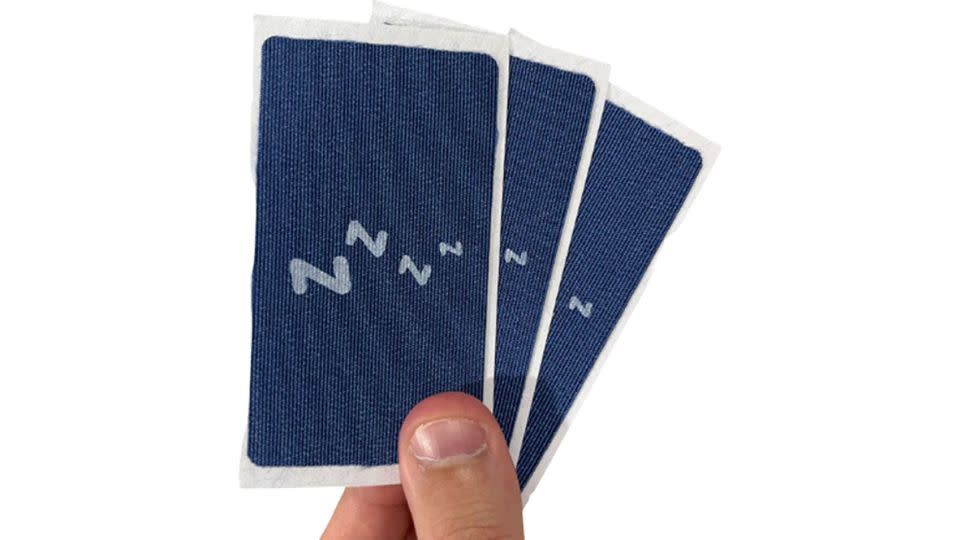
Suzanne Kattau, editor of product testing, has tried several brands of mouth tape and settled on these, which she says don’t irritate the skin and stay on all night. Prior to using mouth tape, she used to snore, but these have helped curb the disturbance and now she (and her husband) sleep soundly. They’re made to cover the entire mouth, encouraging nasal breathing.
KT Tape Original Cotton Precut Kinesiology Tape Strips
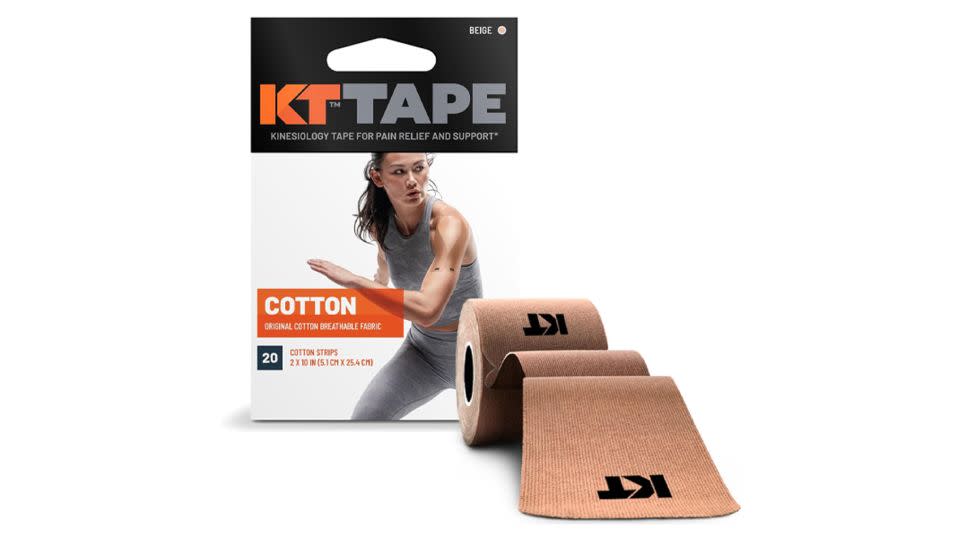
When I first saw mouth taping on my For You page and went down the TikTok rabbit hole on the subject, I was intrigued enough to try it out the same night. I didn’t have actual mouth tape on hand, but I did have this kinesiology tape that is easy to cut down to size and customize for your preferred fit (which, to be fair, was a hack I saw on TikTok). It was comfortable, flexible and since its supposed to stand up to sweat, it easily stayed in place all night.
The Skinny Confidential Mouth Tape
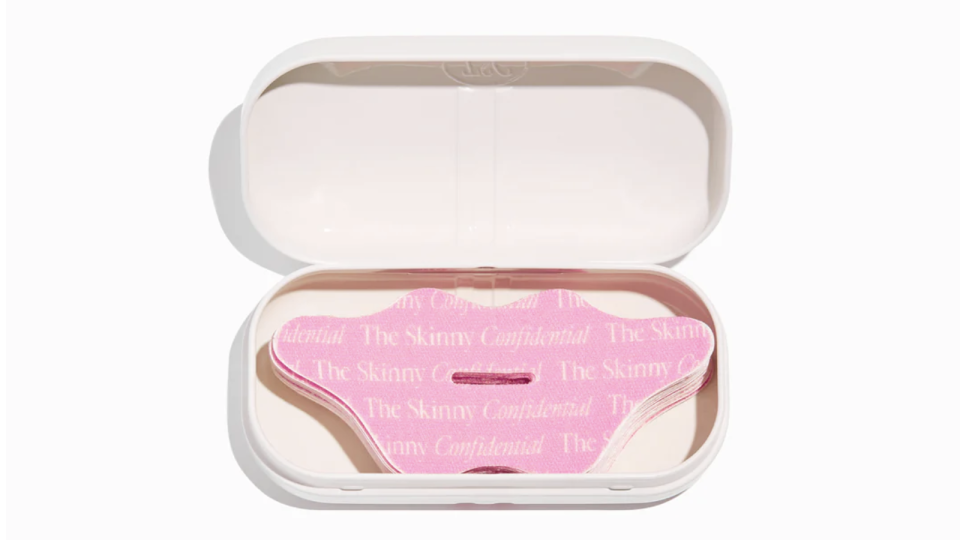
These mouth tape strips from Bosstick’s brand are contoured to the shape of the lips for a pleasant fit. They’re made of a stretchy fabric with secure adhesive and feel virtually weightless. Before falling asleep, I sometimes forget I’m wearing the mouth tape because it’s that comfortable. One feature that sets them apart from others I’ve tried is the slit in the middle. According to Bosstick, “After a lot of research, we found that people like to wake up in the middle of the night and drink water out of a straw. This little slit gives you an option to drink water. If you don’t want to use the slit, you can easily pull it over your upper lip.” Plus, the cute travel case is a bonus.
$35 at The Skinny Confidential
Best mouth tape
Nexcare Strong-Hold Pain-Free-Removal Tape
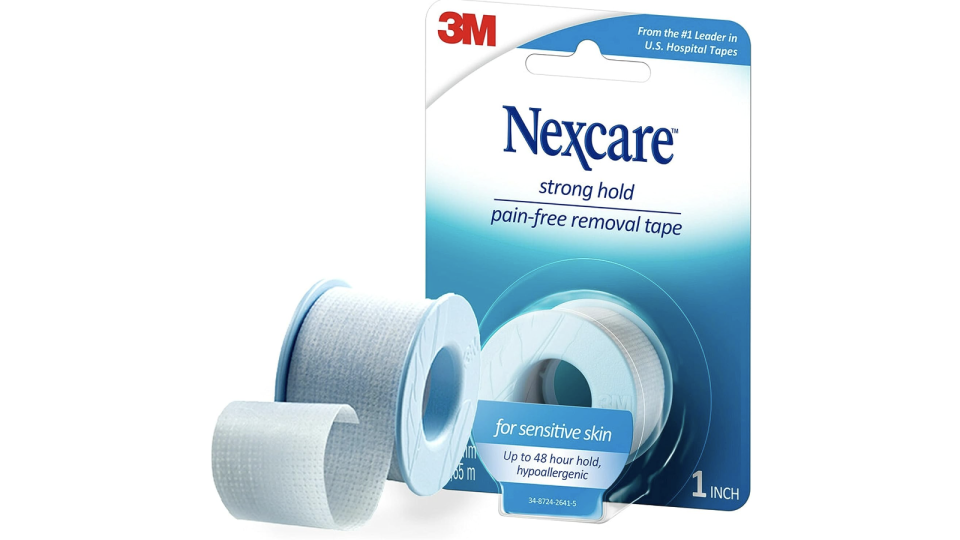
This affordable, multipurpose medical tape is a favorite for mouth taping. It’s made to be extra gentle on the skin, removing easily and leaving no sticky residue behind.
Hostage Mouth Tape
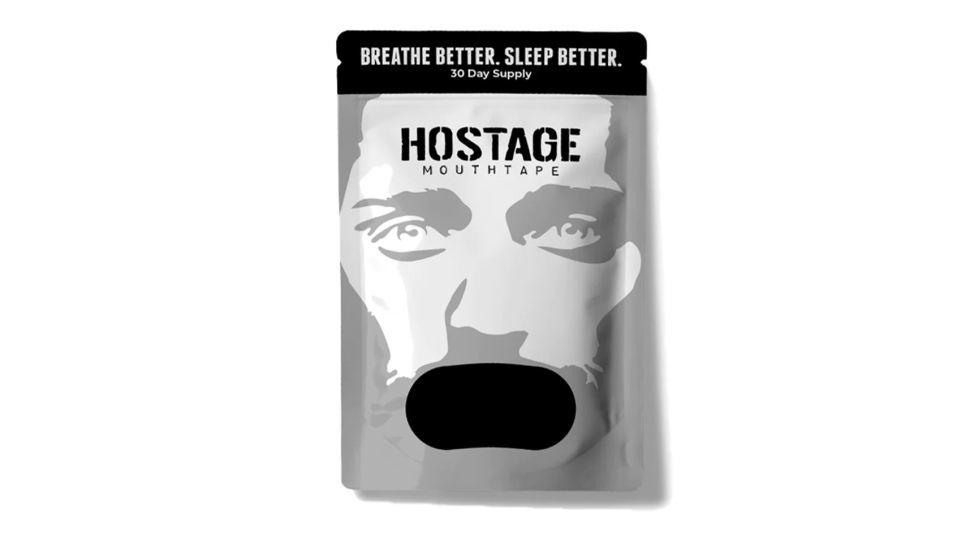
One of the popular options on TikTok, Hostage Mouth Tape is an especially great choice for those with facial hair. The adhesive sticks even over scruff and beards, and the strips fully cover the mouth to ensure full nasal breathing.
VIO2 Mouth Tape

Not all mouth tapes have to fully cover the lips to be effective. This tape can be worn two flexible ways that still allow the wearer to drink water out of a straw if desired. Because of its less restrictive shape, it may be a good starting point for those nervous about completely taping over their lips.
Note: The prices above reflect the retailers' listed price at the time of publication.
For more CNN news and newsletters create an account at CNN.com

